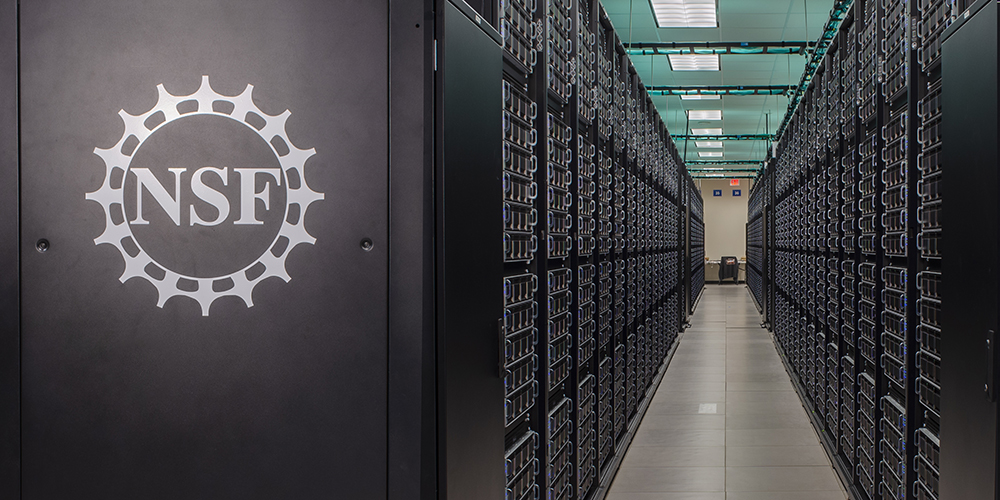A supermassive black hole called Sagittarius A* (yes, the asterisk is part of it!) sits at the center of the Milky Way. Now, for the first time, we can see it. The resulting direct image of Sagittarius A*, revealed this week, was made possible by the Event Horizon Telescope (EHT) array and the Frontera supercomputer at the Texas Advanced Computing Center (TACC).
The EHT array includes a selection of eight radio telescopes around the world, spanning sites from Spain to Antarctica. This array was conglomerated with the distinct purpose of directly observing a black hole for the first time—and, indeed, in April 2019, they did just that, obtaining an image of a black hole at the center of the galaxy M87, around 55 million light-years from Earth.
Sagittarius A* (shortened as Sgr A*) is much closer—a mere 27,000 light-years away (around 1.6 septendecillion miles, or about 56 billion times the distance from Earth to Neptune). However, Sagittarius A* is more than a thousand times smaller and less massive than M87*, and Sagittarius A* posed other challenges that made capturing an image much more challenging than the same task was for M87*.
“The gas in the vicinity of the black holes moves at the same speed—nearly as fast as light—around both Sgr A* and M87*,” explained Chi-kwan Chan, a researcher at Steward Observatory and Department of Astronomy and the Data Science Institute of the University of Arizona. “But where gas takes days to weeks to orbit the larger M87*, in the much smaller Sgr A* it completes an orbit in mere minutes. This means the brightness and pattern of the gas around Sgr A* was changing rapidly as the EHT Collaboration was observing it—a bit like trying to take a clear picture of a puppy quickly chasing its tail.”
The EHT array captured an enormous amount of data of this moving target, but understanding that data and distilling it into a legible image was another matter entirely. To help, the researchers turned to supercomputing, building the largest-ever simulation library of black holes. These models—based on the known physical properties of black holes, general relativity, magnetohydrodynamics and more—were aimed at simulating what the EHT would see based on researchers’ best understandings of what black holes should look like to such instruments.
“We produced a multitude of simulations and compared them to the data. The upshot is that we have a set of models that explain almost all of the data,” said Charles Gammie, a researcher at the University of Illinois at Urbana-Champaign, in an interview with TACC’s Aaron Dubrow. “It’s remarkable because it explains not only the Event Horizon data, but data taken by other instruments. It’s a triumph of computational physics.”
These simulations were run predominantly on TACC’s Frontera system, a 23.5 Linpack petaflops Dell system that ranks 13th on the most recent Top500 list. The final analysis used nearly 80 million CPU hours on Frontera, which were complemented by 20 million CPU hours on the NSF’s Open Science Grid.

And so, after 100 million CPU hours and five years, the 300-plus researchers from 80 institutes who worked on the project were able to produce an image of Sagittarius A*, which appears as a sort of fiery donut that happens to be four million times more massive than the Sun (pictured in the header, courtesy of the EHT Collaboration).
“Advanced computing systems like Frontera allow us to use cutting-edge computational science methods to model these complex systems, study the boundaries between order and chaos, and understand what we are seeing with the Event Horizon Telescope,” Chan said.
“We were stunned by how well the size of the ring agreed with predictions from Einstein’s Theory of General Relativity,” added Geoffrey Bower, an EHT project scientist from the Institute of Astronomy and Astrophysics, Academia Sinica, Taipei. “These unprecedented observations have greatly improved our understanding of what happens at the very center of our galaxy and offer new insights on how these giant black holes interact with their surroundings.”
To learn more about this research, read the coverage from TACC here and read the coverage from the EHT Collaboration here.




























































